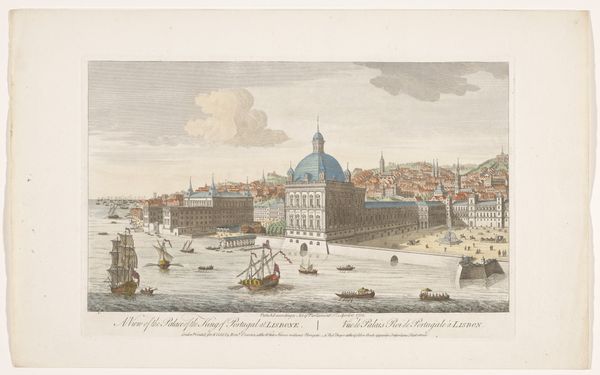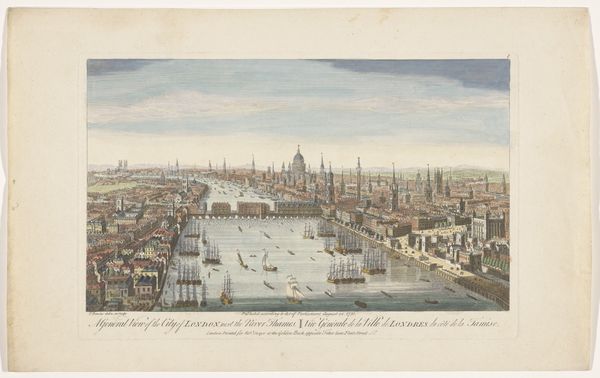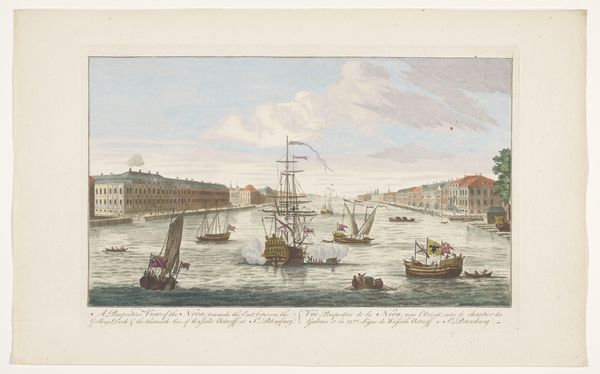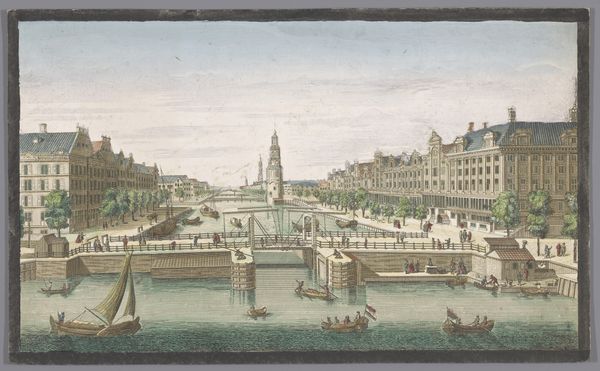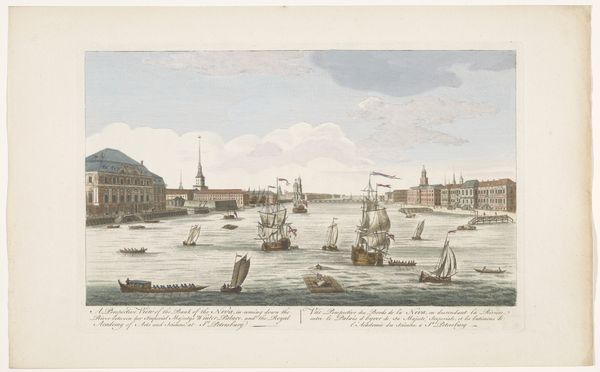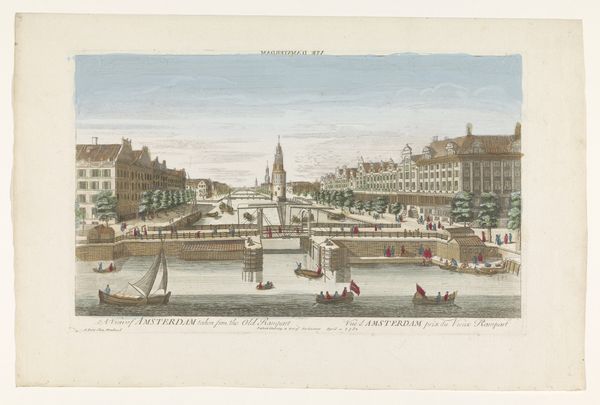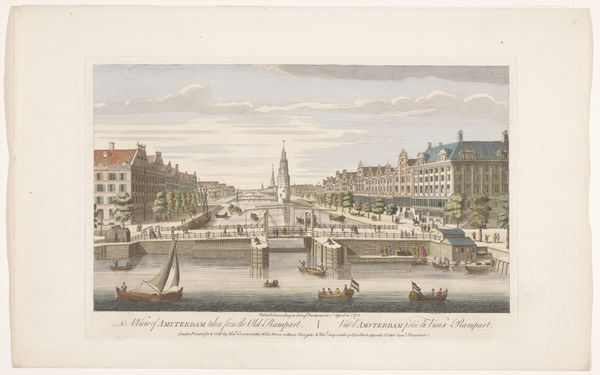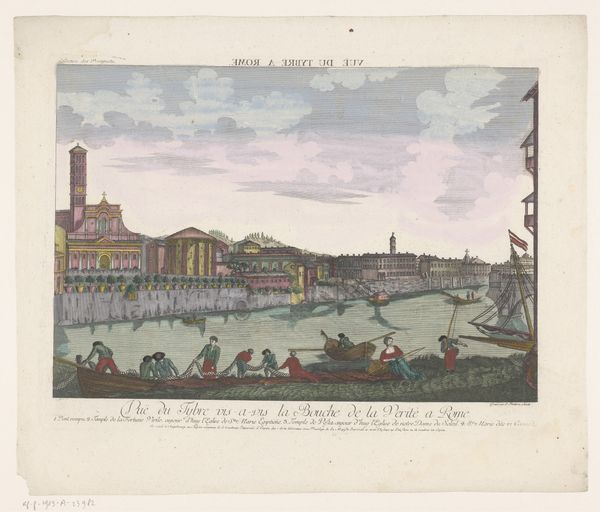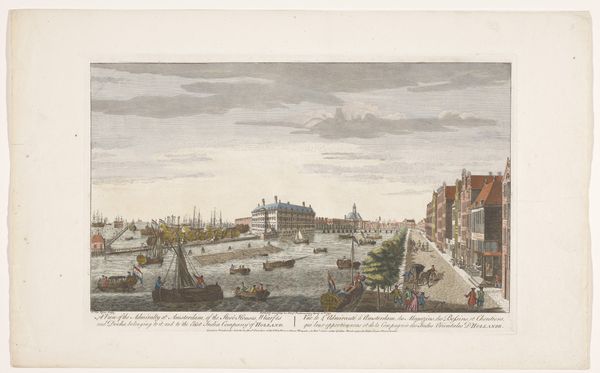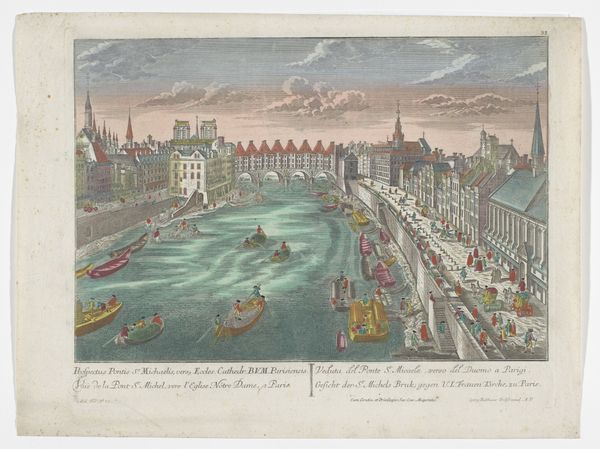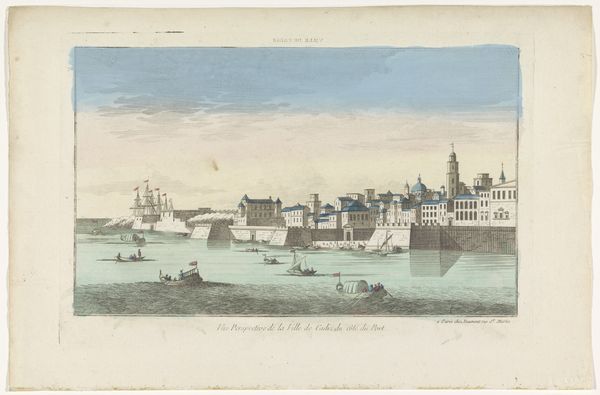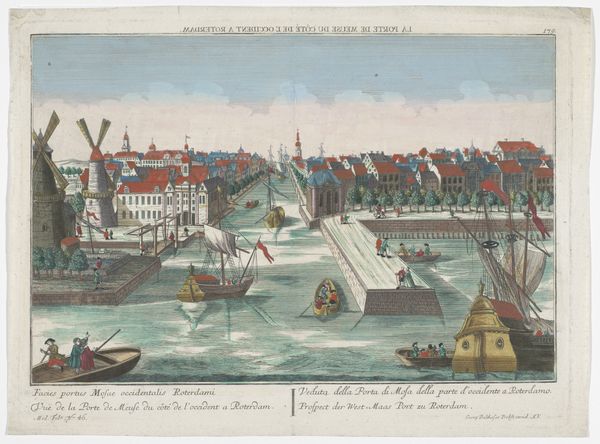
Gezicht op de rivier de Seine tussen de Pont Royal en de Pont Neuf te Parijs 1742 - 1801
0:00
0:00
Dimensions: height 319 mm, width 429 mm
Copyright: Rijks Museum: Open Domain
Editor: This is "View of the Seine River Between the Pont Royal and the Pont Neuf in Paris" by Georg Balthasar Probst, likely created sometime between 1742 and 1801. It’s a print – an etching and engraving, if I understand the details correctly. It feels very… staged, almost theatrical. What strikes you about this cityscape? Curator: That sense of theatricality is quite astute. These cityscapes were often commissioned, not as objective records, but as promotional tools. This wasn’t simply about showing Paris, but presenting a vision of Parisian power and order. Notice how the architectural details are meticulously rendered? This conveys a sense of stability and control, key for attracting investment and maintaining social cohesion. Editor: So it’s less about accurately portraying daily life and more about…selling an idea of Paris? Curator: Precisely. Consider the figures. They're small, almost incidental, placed to animate the scene without disrupting the overall architectural dominance. Are they working-class? Are they upper class? The print doesn't specify social class. Instead it reinforces a hierarchy where the city’s built environment—and, by extension, its ruling class—is paramount. Look, for example, how the composition leads the eye towards key monuments. These would be locations of concentrated political authority. Editor: So, while seemingly just a nice view, it's actually communicating very specific power dynamics. Were these types of prints widely accessible? Curator: That’s a very good question! It would have been intended for an educated elite. They were expensive to produce, even at that time. Editor: I never considered how a cityscape could be a political statement. Curator: That's the power of understanding art in its historical context. These weren't just pretty pictures; they were carefully constructed arguments about power, place, and identity. Hopefully, you understand prints a little bit better now!
Comments
No comments
Be the first to comment and join the conversation on the ultimate creative platform.
